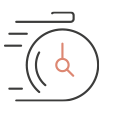Many people in Israel are passionate about fulfilling an untapped potential of female students in areas such as advanced mathematics, the sciences and technology. As a consequence, programs encouraging girls to take a greater part in mathematics and the sciences are operating in schools across the country. Most of them offer extracurricular and supplementary activity, which is focused on enrichment, empowerment and role modeling, rather than on a specific area of study.When we explored these programs four years ago, we discovered that although they have some positive effect, they are dependent on philanthropic donations and do not implement long-term change within the system. We tried working with two of them (Alliance and Amal), in order to add components dedicated to engaging teachers, mainly by raising awareness.
However, since the foundation’s strategy is focused on teaching practice, we wanted to know if there are any pedagogic methods that would better suit the learning style of female students, and if they exist, to help teachers implement them at scale. So we asked MindCET, a pedagogic hub, to investigate the classroom practice of excellent teachers who are highly successful in attracting female students to their classes.MindCET reached the conclusion that what counts in practice is high quality clinical teaching, which responds to the needs of different students, both male and female. They claimed that there is no such thing as a gender-based pedagogy, and that when teaching is of a low quality, both male and female students drop out, whereas when the teacher is great, they all flourish.
As a result, we remain undecided as to whether to develop a customized strategy and to dedicate specific resources to the learning of female students. There remains a certain amount of ambiguity around the basic data, which leads to conflicting conclusions. Ultimately, we have seen many mathematics and physics teachers who believe that they are already doing what they can to encourage female students.
Therefore, we believe it is necessary to map and organize the data on the study of mathematics and the sciences by female students and provide some conclusive reliable grounding that can shed light on potential leverages and directions. We hope that solid and well-researched information presented in a clear and persuasive manner will enlighten our partners and ourselves.
To do that, the foundation approached the Henrietta Szold Institute, a veteran and experienced, not-for-profit organization, which provides educational and social scientific research and has worked with the foundation in the past on a number of studies. Dr. Rachel Zorman, a senior researcher whose expertise lies in the study of female students, and has studied this area at Stanford University with Professor Lee Shulman, leads the Institute.
In discussion with Szold, they propose a study over the course of six months, which will include analyzing quantitative data and conducting focus groups among female students and teachers. The study will focus on the following questions:
The institute will present its findings in a brief 10-12 page report, via a well-designed infographic presentation, and on a learning day, to which they will invite leaders of foundation programs, practitioners and researchers. The presentation will be shared and promoted in social media.
* The text above shows the grant as approved by the Foundation’s Board of Directors / Grant 196




